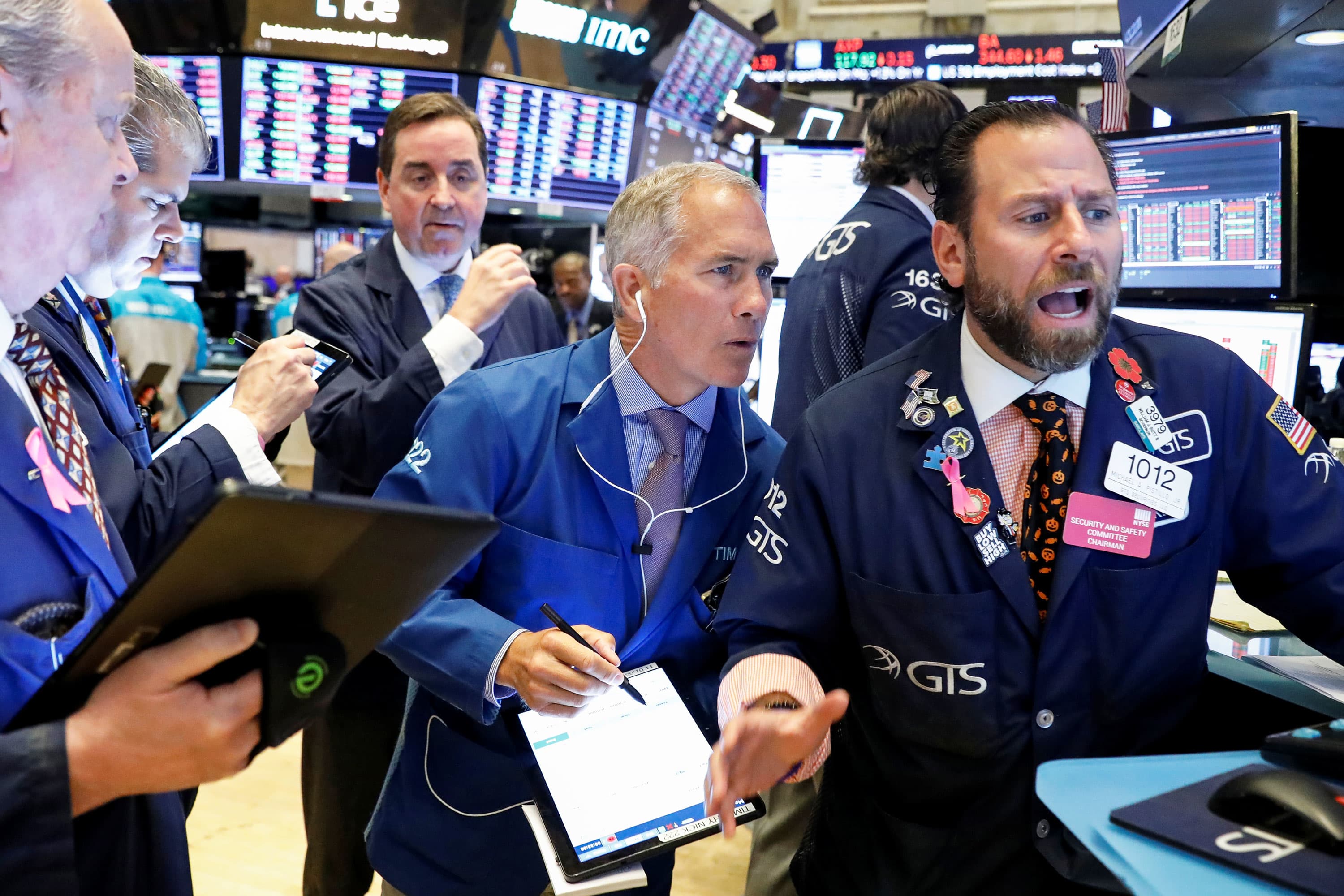The market is breaking out as global economic data is taking the edge off the slowdown narrative.
The marginal mover of stocks this year has been the Federal Reserve, trade, and the global economic slowdown, led by weakness in Europe and China.
The global economic slowdown has even encompassed worries about a slowdown in the U.S. Worries about a recession in 2020 — a dominant narrative earlier this year — gave way to the more benign slow growth narrative that moved stocks up in October.
That slow growth narrative posited U.S. GDP of 1% to 2% in 2020, 0% to 5% earnings growth, and stability in Europe.
But even that narrative may now be changing. U.S. job growth in October was strong, with upward revisions in August and September. Wage growth of 3% year-over-year is good, but not so strong to spark inflation concerns.
October’s manufacturing purchasing managers’ index from the Institute for Supply Management was weak but better than feared, and New Orders — the critical component — did not slip.
China manufacturing was also much better than expected.
Bottom line: “Today’s economic data is taking some of the edge off of the ‘economic slowdown’ narrative,” Alec Young, Managing Director, Global Markets Research, FTSE Russell, told me.
What’s missing? What would move the markets up another, say, 10 percent? Traders cite three components to a further rally:
Bond yields — Despite a move off the bottom in yields in October, there is not yet a “decisive” bottom that has been put in, says Marc Chandler, Chief Market Strategist at Bannockburn. A more decisive move up in yields would be a sign of modest reflation: “That would also push money out of the bond market and into the stock market and confirm a more optimistic scenario,” he told me.
Trade — With the trade news flow so confusing, “We need to take the December 15th tariff hike off the table,” Young told me.
Earnings — Earnings for the fourth quarter have been coming down to the low single digits, which has happened every quarter this year. The “slow growth” narrative posits 2020 earnings growth that is flat to up mid-single digits, well below current estimates of 10% growth.
But that narrative could also change: “Better economic data would force traders to re-evaluate flat or low earnings growth for 2020,” Nick Raich at Earnings Scout told me.
Chandler noted that there is early signs that even perennially weak Europe is improving, with Eurozone GDP estimates higher than expected.
“We have seen some better global numbers that suggest we might getting a synchronized lifting from the soft patch,” Chandler told me.
If the data continues to improve, it will be much easier to argue not only that earnings should be higher, but also that the market deserves to trade at a higher multiple. Assuming 5% earnings growth, the S&P is currently trading at 18 times 2020 earnings, a pricey multiple.
“Higher economic growth could easily provide bulls with the cover they need to argue the market is fairly priced and perhaps even a bargain,” Raich told me. “As long as the rate of change of earnings expectations are rising, the multiple could expand.”
